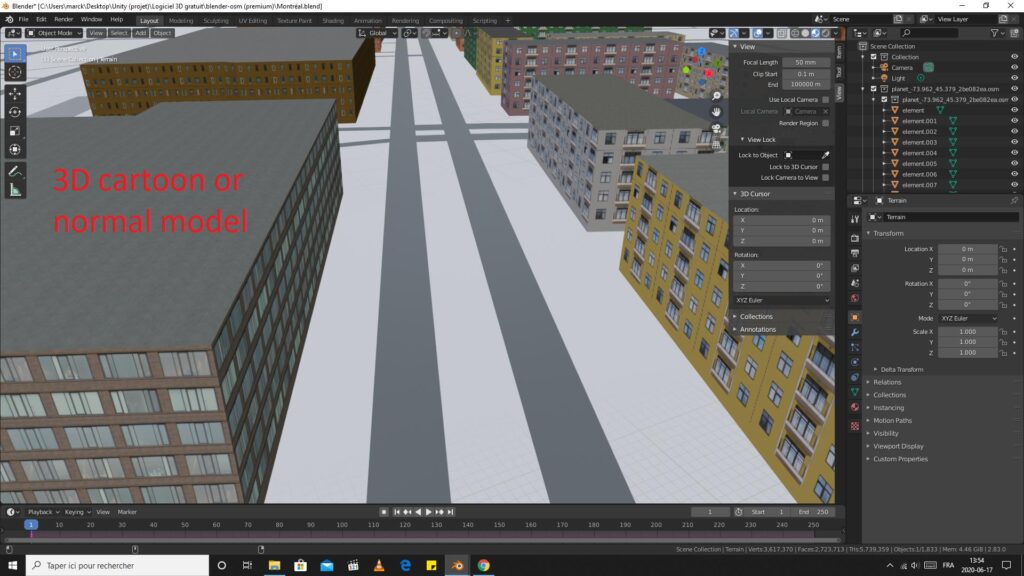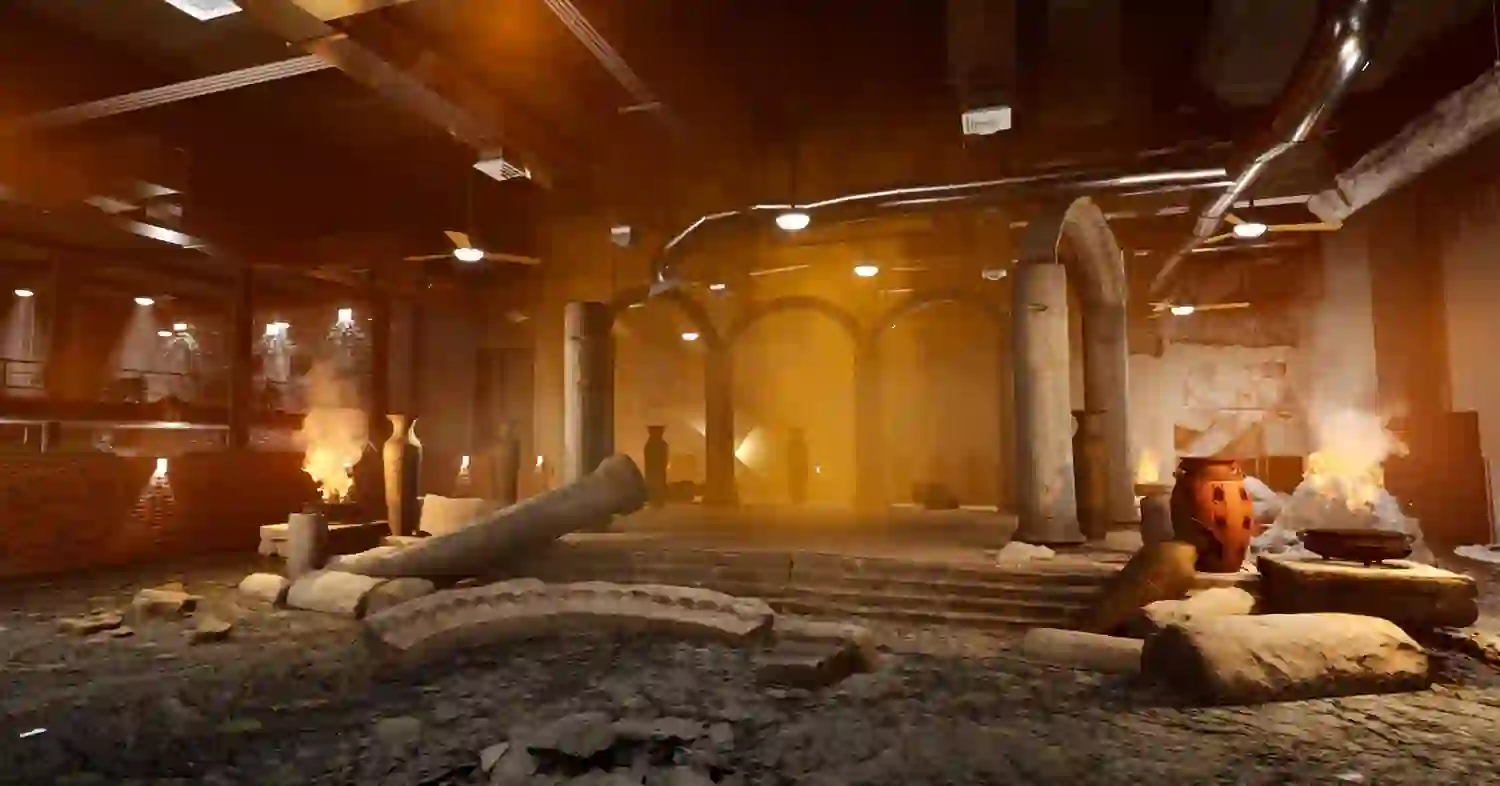The Rise of Procedural Generation in 3D Game Assets
by Animatics Asset Store in Blog on September 3, 2024In the world of game development, the creation and management of 3D game assets have become increasingly sophisticated. One of the most revolutionary techniques in recent years is procedural generation. This method uses algorithms to create complex textures, models, and environments dynamically, allowing developers to generate vast, intricate worlds with minimal manual effort. Procedural generation is transforming how 3D game assets are produced, making game development more efficient and flexible.
What is Procedural Generation?
Procedural generation involves using algorithms to generate data algorithmically rather than manually. For 3D game assets, this means creating complex structures, landscapes, and textures using code rather than traditional modeling techniques. This approach offers significant advantages for game developers, including:
- Dynamic Environments: With procedural generation, game worlds can be created on-the-fly, resulting in diverse and unpredictable gameplay experiences.
- Asset Optimization: By generating assets procedurally, developers can reduce the file size and improve performance, as the assets are created in real-time and require less storage space.
- Endless Possibilities: The use of procedural algorithms can result in nearly infinite variations of game assets, making each playthrough unique and engaging.
Benefits of Procedural Generation in 3D Game Assets
Procedural generation provides several key benefits for game developers:
- Increased Efficiency: Automated asset creation speeds up the development process, allowing teams to focus on other aspects of game design.
- Enhanced Creativity: Developers can experiment with different parameters and algorithms to create innovative and unique 3D game assets.
- Scalability: As games grow and evolve, procedural generation allows for easy expansion of game worlds and content without significant additional work.

Challenges and Solutions
While procedural generation offers numerous advantages, it also comes with its own set of challenges:
- Complexity: Developing algorithms that produce desirable and high-quality assets can be complex. Ensuring that procedural assets integrate seamlessly into the game environment requires careful planning and testing.
- Consistency: Maintaining a consistent visual style and quality across procedurally generated assets can be difficult. Developers must balance algorithmic randomness with artistic direction to ensure cohesive game design.
To address these challenges, many developers turn to specialized solutions like the Animatics Asset Store. This resource provides a vast library of pre-built procedural assets, allowing developers to integrate high-quality content into their games with ease. By leveraging these pre-designed assets, developers can focus on refining their game’s unique elements while relying on the store’s assets for consistency and quality.
Procedural Generation and Dynamic Environments
One of the most exciting applications of procedural generation is in creating dynamic environments. Instead of designing every aspect of a game world manually, developers can use algorithms to generate landscapes, buildings, and other elements in real-time. This approach offers several advantages:
- Variety and Repetition: Procedural algorithms can produce diverse environments without repeating the same assets, creating a more engaging experience for players.
- Adaptive Worlds: Dynamic environments can change in response to player actions or game events, adding a layer of interactivity and immersion.
By incorporating procedural generation into their workflows, developers can create expansive, immersive worlds that adapt to player choices and actions, enhancing the overall gaming experience.

The Role of 3D Models in Procedural Generation
3D models are a crucial component of procedural generation. These models can be generated, manipulated, and optimized using algorithms to create complex game assets efficiently. Procedural techniques allow for:
- Automated Texture Mapping: Applying textures to procedurally generated models can be done automatically, ensuring consistent and realistic appearances.
- Efficient Model Creation: Algorithms can quickly generate a variety of models, from simple objects to complex structures, reducing the time and effort required for manual modeling.
The integration of 3D models into procedural generation workflows enables developers to create rich, detailed game worlds while maintaining high performance and visual fidelity.
Real-Time Rendering and Asset Optimization
In modern game development, real-time rendering is essential for delivering immersive and responsive gameplay experiences. Procedural generation plays a key role in optimizing assets for real-time performance:
- Efficient Resource Management: Procedurally generated assets can be optimized on-the-fly, reducing the impact on system resources and improving frame rates.
- Adaptive Detail: Real-time rendering can adjust the level of detail of assets based on the player’s perspective, ensuring smooth performance even in complex environments.
Procedural generation techniques help developers optimize 3D game assets for real-time rendering. This ensures a seamless and engaging experience for players.
Virtual Worlds and Endless Possibilities
The potential for procedural generation extends beyond traditional game worlds into the realm of virtual reality and expansive digital landscapes. Procedurally generated assets can create vast, detailed virtual worlds with minimal manual intervention:
- Expansive Landscapes: Developers can generate large-scale environments that offer endless exploration opportunities for players.
- Unique Experiences: Each player’s experience can be unique, thanks to the procedural generation of diverse environments and assets.
The use of procedural generation in virtual worlds allows developers to create immersive experiences that captivate players and encourage exploration.
Conclusion
The rise of procedural generation has significantly impacted the creation of 3D game assets. It offers developers innovative ways to build dynamic and engaging game worlds. By automating asset creation and optimizing performance, procedural techniques enhance the efficiency and creativity of game development. The Animatics Asset Store supports developers by offering high-quality, pre-designed assets. These assets integrate seamlessly into procedurally generated environments. Procedural generation is evolving rapidly and will play a central role in shaping the future of game development. It will also significantly impact digital content creation.
By embracing procedural generation, developers can unlock new possibilities and push the boundaries of game design. This approach delivers unique and captivating experiences to players worldwide.






